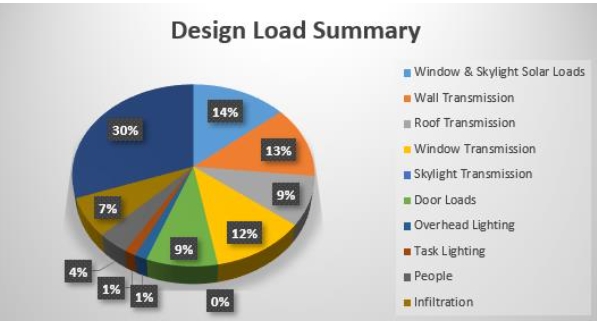Evaluating the role of consultants in assessing functional feasibility and reliability of buildings: A case study in Banda Aceh
Abstract
The assessment of building reliability is a critical aspect of the functional feasibility system, as outlined in the 1998 Technical Instructions of the Directorate General of Human Settlements. These assessments typically encompass architectural, structural, and utility criteria. This research aims to understand the role of consultants in evaluating the functional feasibility of buildings in Banda Aceh. Purposive sampling was employed with 11 respondents, considering factors such as education, legal, and technical expertise. Data analysis involved factor analysis using the KMO-MSA method and descriptive analysis using SPSS software. The results reveal that consultants play a crucial role in assessing the functional feasibility of buildings, particularly in terms of skill competency, integrity, and professionalism, with a significant emphasis on the suitability of the function and specifications of the requested buildings. Moreover, the legal factor variable emerges as pivotal in consultants’ activities, ensuring compliance with statutory regulations. This study underscores the importance of consultants in ensuring building reliability and adherence to stipulated provisions.
References
[1]Nitithamyong P, Tan Z. Determinants for effective performance of external project management consultants in Malaysia. Engineering, Construction and Architectural Management. 2007; 14(5): 463-478. doi: 10.1108/09699980710780764
[2]Law Number 28 of 2002 dated December 16 2002, on Building, 2002 (Indonesian). Available online: https://peraturan.bpk.go.id/Details/44487/uu-no-28-tahun-2002 (accessed on 22 June 2024).
[3]Halil FM, Nasir NM, Hassan AA, et al. Feasibility Study and Economic Assessment in Green Building Projects. Procedia—Social and Behavioral Sciences. 2016; 222: 56-64. doi: 10.1016/j.sbspro.2016.05.176
[4]Wuryanti W, Suhedi F. Interpretation of Building Reliability Inspection Results (Indonesian). Jurnal Permukiman. 2016; 11(2): 74. doi: 10.31815/jp.2016.11.74-87
[5]Rani HA, Hanif M. Implementation of Fit for Purpose Certification for Public Buildings in Banda Aceh City (Indonesian). Tameh: Journal of Civil Engineering. 2021; 10(1): 9-19. doi: 10.37598/tameh.v10i1.120
[6]Rani HA. Construction Project Management (Indonesian). Deepublish; 2016.
[7]Rani HA. Project Management Functionality in Construction Project Success (Indonesian). Deepublish; 2021.
[8]Sukarta KGN, Tjakra J, Pratasis PAK. The Role of Construction Management Consultant in Building Construction Project (Case Study: Multipurpose Building of Tadulako University, Palu—Central Sulawesi) (Indonesian). TEKNO. 2021; 19: 79.
[9]Simanjuntak MRA, Budiman D. Study on the Identification of Factors of Consultant's Role in Testing the Passability of Function after Handover of Construction Work in Bekasi City (Indonesian). Prosiding Seminar Nasional Teknik Sipil. 2019; 285-291.
[10]Harisun E. Study of Building Function Certificate System in Ternate City, North Maluku Province (Indonesian). Jurnal Ilmiah Media Engineering. 2013; 3(1): 14-22.
[11]Lutfi M, Syaifullah BN. Analysis of the feasibility of the sukasari bogor market building through the building function feasibility approach (Indonesian). ASTONJADRO. 2020; 9(1): 14. doi: 10.32832/astonjadro.v9i1.2726
[12]McLeod S. Feasibility studies for novel and complex projects: Principles synthesised through an integrative review. Project Leadership and Society. 2021; 2: 100022. doi: 10.1016/j.plas.2021.100022
[13]Minister of Public Works Regulation No. 29/PRT/M/2006 on Guidelines for Technical Requirements for Buildings, 2006 (Indonesian). Available online: https://peraturan.bpk.go.id/Details/104487/permen-pupr-no-29prtm2006-tahun-2006 (accessed on 22 June 2024).
[14]Government Regulation No. 36/2005, on the Implementation Regulation of Law No. 28/2002, 2005 (Indonesian). Available online: https://peraturan.bpk.go.id/Details/49491 (accessed on 22 June 2024).
[15]Government Regulation No. 30/PRT/M/2006 on Technical Guidelines for Facilities and Accessibility in Buildings and the Environment, 2006 (Indonesian). Available online: https://peraturan.bpk.go.id/Details/104488/permen-pupr-no-30prtm2006-tahun-2006 (accessed on 22 June 2024).
[16]Decree of the Minister of Public Works No. 10/KPTS/2000 on Technical Provisions for Fire Safety in Buildings and Environments, 2000 (Indonesian). Available online: https://jdih.pu.go.id/detail-dokumen/2020/1#div_cari_detail (accessed on 22 June 2024).
[17]Decree of the Minister of Public Works No. 11/KPTS/2000 on Technical Provisions for Fire Management in Cities, 2000 (Indonesian). Available online: https://peraturan.infoasn.id/keputusan-menteri-pekerjaan-umum-dan-perumahan-rakyat-nomor-11-kpts-m-2000/ (accessed on 22 June 2024).
[18]Minister of Public Works Regulation No. 26/PRT/M/2008 on Technical Requirements for Fire Protection Systems in Buildings and Environments, 2008 (Indonesian). Available online: https://peraturan.bpk.go.id/Details/104475/permen-pupr-no-26prtm2008-tahun-2008 (accessed on 22 June 2024).
[19]Minister of Public Works Regulation No. 25/PRT/M/2007 on Guidelines for Building Function Certificate, 2007 (Indonesian). Available online: https://peraturan.bpk.go.id/Details/104490/permen-pupr-no-25prtm2007-tahun-2007 (accessed on 22 June 2024).
[20]Minister of Public Works Regulation No. 24/PRT/M/2007 on Technical Guidelines for Building Construction Permits, 2007 (Indonesian). Available online: https://peraturan.bpk.go.id/Details/104489/permen-pupr-no-24prtm2007-tahun-2007 (accessed on 22 June 2024).
[21]Minister of Public Works Regulation No. 26/PRT/M/2007 on Guidelines for Building Expert Teams, 2007 (Indonesian). Available online: https://peraturan.bpk.go.id/Details/104491/permen-pupr-no-26prtm2007-tahun-2007 (accessed on 22 June 2024).
[22]Minister of Public Works Regulation No. 24/ PRT/M/2008 on Guidelines for Building Maintenance and Maintenance, 2008 (Indonesian). Available online: https://peraturan.bpk.go.id/Details/104476/permen-pupr-no-24prtm2008-tahun-2008 (accessed on 22 June 2024).
[23]Minister of Public Works Regulation No. 16/PRT/M/2010 on Technical Guidelines for Periodic Inspection of Buildings, 2010 (Indonesian). Available online: https://peraturan.bpk.go.id/Details/160054/permen-pupr-no-16prtm2010-tahun-2010 (accessed on 22 June 2024).
[24]Rasyid YA. Feasibility Analysis of Vertical Residential Buildings (Case Study: Sleman Regency Rusunawa Building, Yogyakarta) (Indonesian). Jurnal Teknisia. 2015; 2: 516-525.
[25]Sugiyono. Quantitative, Qualitative and R&D Research Methods (Indonesian). Alfabeta; 2020.
Copyright (c) 2024 Hafnidar A. Rani, Mahdi Syahbana, Epi Noviana, Muhammad Hafidz Mubarak, Muhammad Shafly Aqsha

This work is licensed under a Creative Commons Attribution 4.0 International License.












